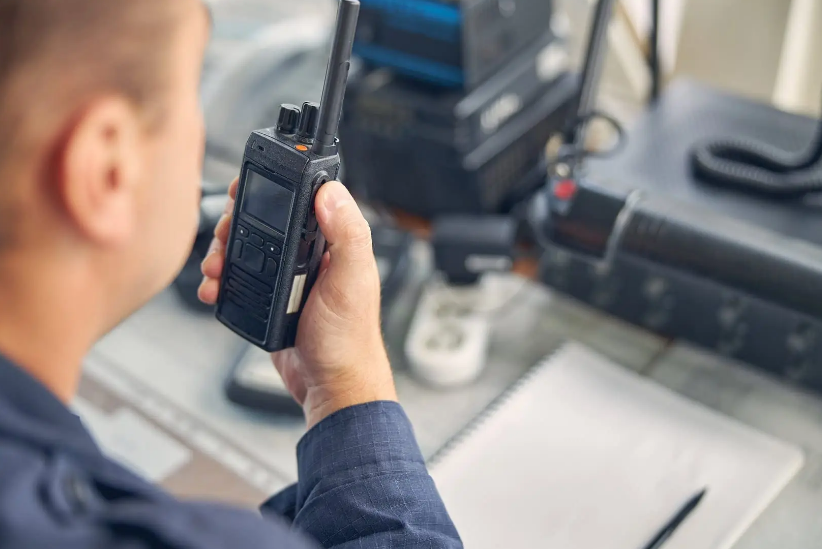How to Choose the Best Radios for Every Situation

Communication is key in today’s fast-paced world, whether you’re coordinating a team, navigating the seas, or ensuring safety in hazardous environments. Radios remain one of the most reliable tools for instant communication, offering options for portability, mobility, marine use, and more. If you are looking for a trusted supplier, RadioRed provides a wide range of communication radios and accessories from top brands like Kenwood, ICOM, and Motorola, making it easier to find the right device for your needs.
Understanding Different Types of Radios
Before purchasing a radio, it’s essential to know the types available and their specific applications.
Portable Radios
Portable radios, also called handheld radios, are compact and versatile, making them perfect for outdoor activities, emergency communication, or daily use. They often come with rechargeable batteries, robust construction, and multiple channels for clear communication. Portable radios are ideal for hikers, security teams, and event coordinators who need instant communication on the move.
Mobile Radios
Mobile radios are typically installed in vehicles, providing reliable communication while on the move. These radios are ideal for logistics teams, emergency responders, and field technicians. Mobile radios usually offer higher transmission power than handheld devices, allowing broader coverage and stronger signals. Advanced mobile radios also include features like GPS tracking, noise reduction, and programmable channels.
Marine Radios
Marine radios are designed specifically for water-based communication. They are waterproof, corrosion-resistant, and often equipped with GPS and emergency channels. These radios are crucial for boats, yachts, and maritime operations, ensuring safety in case of emergencies or adverse weather conditions. Newer models also support automatic identification systems (AIS) to track nearby vessels.
Aerial Radios
Aerial radios are used in aviation, providing essential communication between pilots and air traffic control. They must comply with strict safety regulations and deliver crystal-clear audio even in noisy environments. Features such as frequency stability and interference reduction are critical in this category. Advanced aerial radios also include digital signal processing for clearer communication.
Intrinsically Safe Radios
Intrinsically safe radios are built for hazardous environments where sparks or high heat could trigger explosions. Industries like mining, oil, and gas rely on these radios to ensure safety while maintaining effective communication. Many models are certified for use in explosive atmospheres and include reinforced casings and tamper-proof components.
Key Features to Look For
Selecting the right radio requires considering its features, which vary depending on the type and intended use.
Battery Life
Long battery life is crucial, especially for portable and mobile radios. Users should look for radios with rechargeable batteries that support extended use without frequent charging. Some advanced models include battery-saving modes to prolong operational time.
Signal Range
Signal range determines how far your communication can travel. While portable radios have limited range compared to mobile or aerial radios, certain models can transmit several miles in open areas. Terrain, buildings, and weather conditions can affect range, so consider the environment in which you will use the radio.
Durability
Durability is key, particularly for outdoor or industrial applications. Radios should be resistant to water, dust, and shocks. IP ratings (Ingress Protection) indicate the device’s ability to withstand harsh conditions. Models designed for marine or hazardous environments usually have higher protection standards.
See also: Exploring the Future of Gaming With Cloud Technology
Channels and Frequencies
The number of channels and frequency support matters for clear and uninterrupted communication. Multi-channel radios allow users to switch channels for private conversations, emergency alerts, or team coordination. Digital radios often provide more channels and advanced encryption for secure communication.
Accessories
Accessories enhance functionality and user convenience. Common add-ons include external microphones, speaker mics, antennas, rechargeable batteries, and carrying cases. For specific use cases, such as marine or hazardous environments, specialized accessories improve safety and efficiency.
Technological Advancements
Recent innovations have transformed radiocommunication. Digital radios provide clearer audio, extended range, and integration with GPS systems. Repeaters amplify signals to cover larger areas, ensuring reliable communication in remote locations. Some radios now support Bluetooth, smartphone integration, and remote monitoring.
Finding the Best Deals
Many online stores, like RadioRed, offer competitive deals on radios and accessories. By shopping online, you can compare models, read reviews, and access promotions to find the best combination of features, quality, and price. Keeping up with the latest technology ensures you invest in radios that deliver maximum reliability and value.





